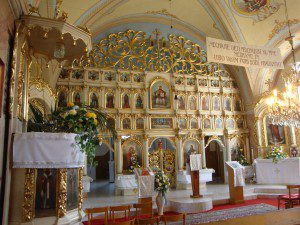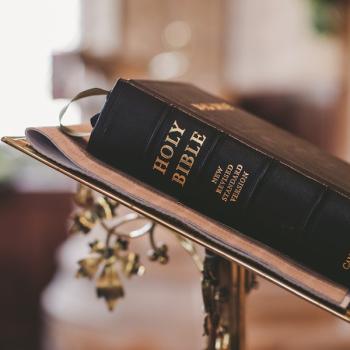
Although here at Patheos Catholic we have a few different Eastern bloggers (Henry Karlson and Justin Tse to name the two besides me), I recently realized that no one has devoted time to a post explaining the exact terminology that properly describes Eastern Catholicism. Recently, I’ve met quite a few Latin Catholics, who, though confused, were interested in learning more, and so thought I’d produce a very basic primer on appropriate terms and descriptors, so as to avoid the faux pas of telling a Ruthenian Catholic that you’ve attended his or her “Mass” or asking a Ukrainian Greek Catholic about his or her “Ukrainian Rite service.”
Some of the terms presented are official; others represent recommendations on my part, drawn mostly from my experiences interacting with other Eastern Catholics who already often feel marginalized within the Church.
Without further ado: the most basic thing to understand is that the Catholic Church is actually made up of 24 sui iuris (self-governing) Churches in union with one another, though distinct in individual hierarchies. The Latin Church, what most people know as the entire Catholic Church, is only one of these 24. Here “self-governing” refers to their individual independence. To an outsider, the Ruthenian Church and the Ukrainian Greek Catholic Church may have similar-seeming liturgies, but they are totally distinct bodies with different bishops and internal rules, though with a related spiritual patrimony. As one publication of the USSCB has described it:
That Church, Holy and Catholic, which is the Mystical Body of Christ, is made up of the faithful who are organically united in the Holy Spirit through the same faith, the same sacraments, and the same government and who, combining into various groups held together by a hierarchy, form separate Churches or rites.
Here, another point must be made: a “rite” is not a “Church.” The former is, effectively, a specific set of inherited principles, defined by the Code of Canons of the Eastern Churches (Canon 28) thus:
A rite is the liturgical, theological, spiritual and disciplinary patrimony, culture and circumstances of history of a distinct people, by which its own manner of living the faith is manifested in each Church sui iuris. 2. The rites treated in this code, unless otherwise stated, are those which arise from the Alexandrian, Antiochene, Armenian, Chaldean and Constantinopolitan traditions.
So, above, I mentioned that the Ruthenian Church and the Ukrainian Greek Catholic Church might, to an outsider, appear to be the same Church, at least liturgically. This is because they both share the patrimony that is the Byzantine (or Constantinopolitan) Rite, a set of spiritual traditions handed down from ancient and medieval Constantinople. To create an imperfect parallel, the Latin Church once housed a variety of sub-rites beneath the larger Latin Rite (the Mozarabic and Ambrosian to name just two). You may have not heard of these, because they were largely suppressed by the Latin Church, which gave primacy to the Roman Rite (those traditions finding their origin in Rome). This is the rite most Western Catholics now know, and it itself has several uses (see, for example, the Anglican Use of the Ordinariate). By analogy, we might then see how the Byzantine Rite, which is the tradition of multiple Eastern Catholic Churches, could produce a diversity of smaller-scale liturgical, theological, and practical differences. These differences look small to an outsider, but they matter to those within these individual Churches. A Romanian Greek Catholic liturgy is not exactly the same as a Melkite one, even though both are part of the Byzantine Rite.
In sum, there is no “Eastern Rite.” There are several “Eastern Rites,” each of which is the patrimony of several individual and independent Churches, which share certain traditions, but which are also divided by other (likely less noticeable to an outsider) differences.













